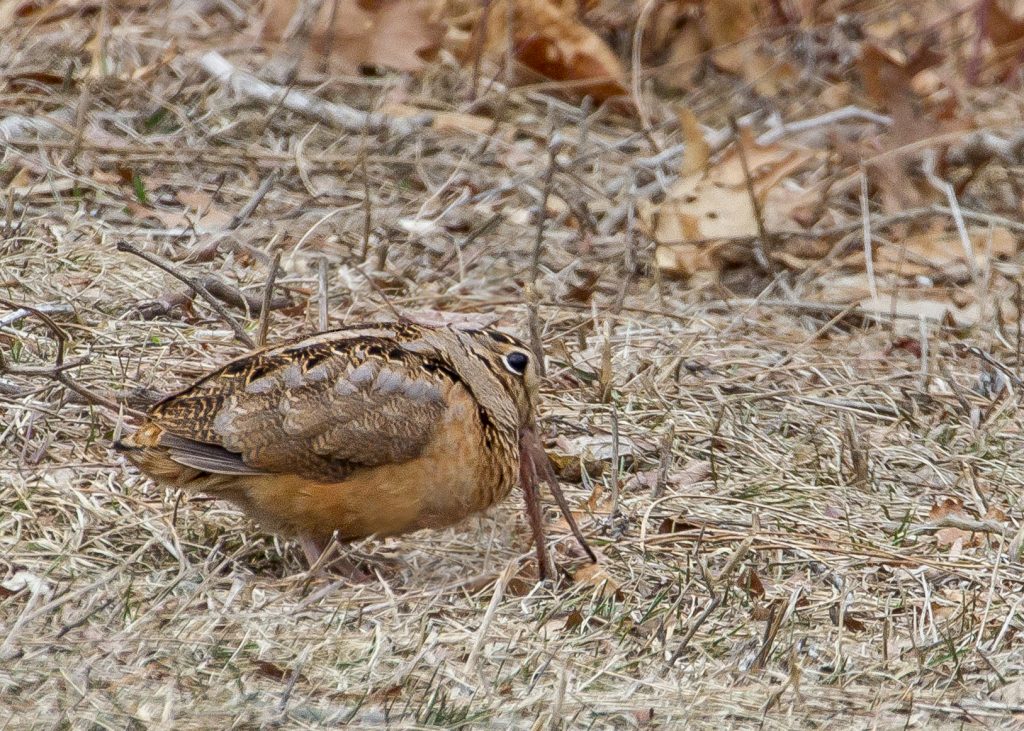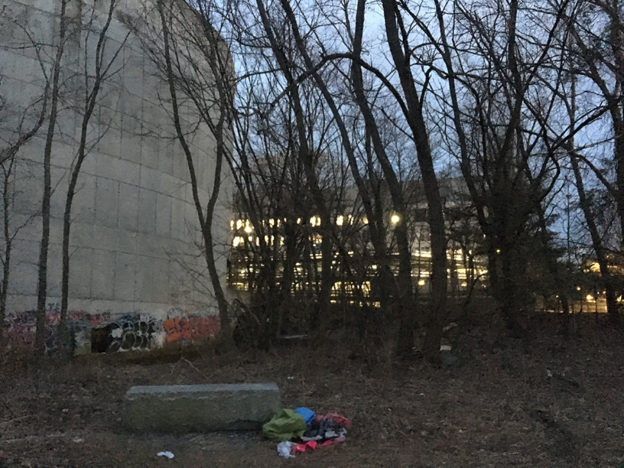American Woodcocks appear to be thriving at the Alewife Reservation in Cambridge, an urban wild sandwiched between office complexes and a subway garage. Despite the myriad dangers of city life, up to a dozen woodcocks perform their aerial mating displays over Alewife every March.
Resilience against the odds
Alewife is awash in threats to these hapless birds. Peregrine Falcons occasionally snag woodcocks in midair as they hunt along the clifflike walls of a brutalist-era parking garage. The expansive glass façade of the recently-expanded office park looms over the adjacent greenspace, causing fatal window collisions. Feral cats prowl around the urban wetland’s thickets. Heavy metals and pollutants from long ago still linger in the soil.

And yet, at least a handful of woodcocks return here every year. In early spring, they give their explosive, nasal calls at dusk, leap into the sky, and twist and turn in midair to attract a mate. Once paired off, they nest and raise young in nearby woodlands.
Is it a trap?
It’s worth considering that this urban wild might be what’s known as an “population sink,” or “ecological trap.”
An ecological trap is any low-quality habitat where more birds die than can successfully reproduce, but which attracts birds even when there’s safer places for them nearby. Traps can appear to have a stable population of birds, when in fact most of those birds die before being replaced as more birds are lured in from safe areas.
A population sink, on the other hand, doesn’t necessarily attract birds more than areas with suitable habitat. Rather, birds end up there as “overflow,” when better territories are fully occupied or made inaccessible. Sinks don’t cause as steep declines, but do put a cap on the birds that can successfully reproduce in an area.
So, it’s entirely possible that Alewife isn’t doing the woodcock population any favors. No woodcock nests have been found in the area, but that doesn’t necessarily mean they’re failing to reproduce.
Brushy fields are all you need
Whether or not Alewife is a net plus or minus for its resident woodcocks, data from the rest of the country show that habitat availability is the main factor limiting woodcock abundance.

Woodcocks love fields with low, woody brush, and adjacent mature forest. They display in springtime over open, grassy areas, but need some cover—ideally patches of shrubs or grass 2’-5’ high—for shelter. They use forest to forage during the rest of the year, especially when they’re raising young.
Without disturbance, either by fire, mowing, or agriculture, brushy fields revert to forest in a couple of decades. This is the story of woodcock habitat across Massachusetts: most ex-farmland has reverted to forest. Remaining fields are farmed more intensively, leaving less and less brushy patches and edge habitat, and fallow fields are becoming rarer.
Mass Audubon’s Foresters for the Birds program is emphasizing the value of young forest and shrubland habitat for birds. By educating foresters and landowners on bird-friendly forestry practices, we’re trying to create more habitat for woodcocks and other young forest specialists.


